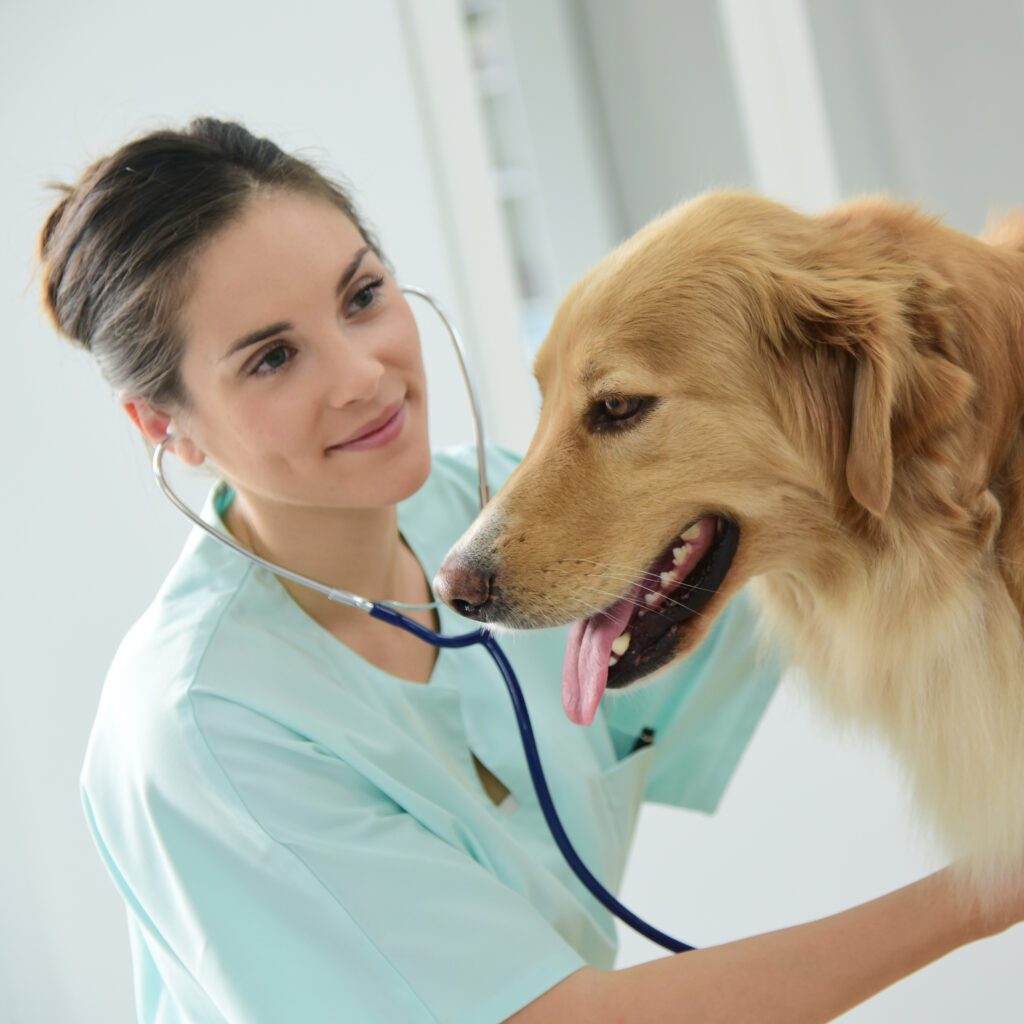
When you’re dealing with wildlife, a Fear Free approach means a delicate balance that’s different than when you’re treating domestic animals.
“While you want it to be low stress, they need to maintain some level of intolerance towards humans,” says Kristian Krause, DVM, a Fear Free certified veterinarian at Serrano Animal and Bird Hospital in Lake Forest, California, where they treat wildlife for Orange County Bird of Prey Center.
Wild animals are stressed by the presence of people in a way that domestic animals aren’t, but if they get too acclimated, that’s going to be a problem once they’re released. “Especially when we’re dealing with something like a raccoon or a bobcat, we don’t want them to think ‘Oh, people are cool, so I can come hang out in a residential area,’” she says.
Keep Them Quiet and Separate
Minimize exposure to humans as much as possible, starting by keeping them in a quiet, isolated environment. Then, Dr. Krause says, maintain a coordinated schedule of husbandry and medical treatment: “Everything happens at once: they’re fed, treated, the cage cleaned, all at once, so you’re not handling them multiple times.”
Make treatment choices with stress control in mind. “Sometimes you have to treat the animal and not the disease,” she says. “It’s more stressful for them to get treatment than to just sit in a quiet cage, so you have to gauge which is the worse of two evils, letting them sit and letting their body heal, or getting them out of the cage twice a day to give them an oral medication or an injection of an anti-inflammatory.”
For some animals, some medications can be administered in a low-stress manner by hiding them in food. Raccoons are such chowhounds that they’re easy to medicate. “If you can put something in a grape, they’re happy,” she says. Carnivores can also be easy. “Chicks and mice are your friends,” she says. “Give them this mouse first so you know they have their medication, then you can give them the next one.”
Handling Tips
When you do need to handle animals, plan for it. “It changes with the animal and the species,” Krause says. “You have to know what you’re doing before you even think about opening that door.”
For instance, handling birds can be a challenge for new staff. “It takes a while to understand how to quickly and efficiently get a bird out of a cage,” she says. Knowing what the plan is and being quick is critical. “You have to go in, grab, and be done so that bird’s not jumping all over the place and you do more harm than good.”
It’s also important to know your species. Take Cooper’s hawks, Krause says. “You barely open the door and they start bouncing off the walls, like a kid who’s had too much candy at Halloween.”
And like domestic animals, wild animals differ in temperament, so Krause likes to have the same people consistently handling the same individuals, so they know how that particular animal tends to react.
Familiarity with species’ needs is also important for treatment and husbandry. Improper temperatures are a major source of stress for reptiles.
“The knee-jerk reaction is, ‘It’s a reptile; they all need to be warm,’ but that’s not necessarily true,” she says. “Putting a chameleon in an 85-degree tank is going to stress them.”
Pain Relief and Sedation
It’s also common for people to not consider that reptiles feel pain, since they might not express it in ways that we recognize. While they often don’t need to be sedated for basic handling or simple procedures, she says, “If they have a fishhook or an abscess, you do need to sedate them or use a local anesthesia; you need to remember that it’s painful so no different than working on a cat or dog.”
Sedation has its own risks, so that’s another delicate balance to maintain. While many procedures that could be done awake on a domestic animal will require anesthesia for wildlife, there are ways to minimize its use. Simply covering eyes and plugging ears with cotton to minimize sight and sound will calm many animals enough for an exam and assessment without the risk of anesthesia and eliminates the stress of being with humans longer while recovering from it.
Krause uses this technique with deer, rabbits, and even coyotes, and says it’s possible to administer some basic treatments this way, such as fluids and antibiotics. This is possible partly because in these animals the reaction is to shut down, which isn’t entirely a low-stress situation, but for a wild animal it can be better than the alternative, she says.
“Now I don’t have to keep you in the hospital for another day because I had to anesthetize you, so I can get you back out where you belong faster, which to me is less stressful.”
This article was reviewed/edited by board-certified veterinary behaviorist Dr. Kenneth Martin and/or veterinary technician specialist in behavior Debbie Martin, LVT.




